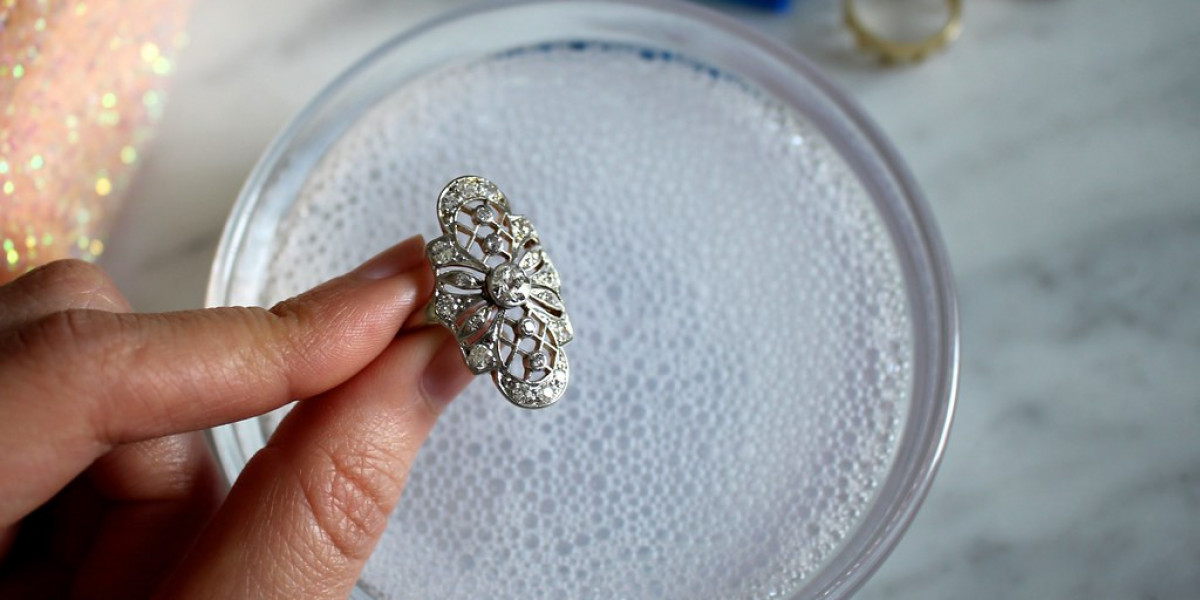Cleaning antique jewelry requires a delicate approach to preserve its integrity and value. These pieces often have historical significance and unique craftsmanship that can be damaged by harsh cleaning methods. Therefore, it’s crucial to adopt a method that ensures the jewelry remains in its original, pristine condition. The cleaning process generally involves several steps, as per thejewellerymag guidance, from inspection to storage, with particular attention given to the materials used in the jewelry.
Before diving into the cleaning process, it’s essential to inspect the antique jewelry thoroughly. Examine each piece carefully to identify any loose stones, broken settings, or other damage. Antique jewelry often features intricate designs and delicate settings, so it’s crucial to ensure that no parts are at risk of falling apart during cleaning. If you discover any damage, it’s best to consult a professional jeweler who specializes in antique pieces before proceeding with any cleaning.
Once you’ve assessed the condition of the jewelry, the next step is to determine the materials involved. Antique jewelry can be made from a variety of materials including gold, silver, platinum, and various gemstones. Each material requires a different cleaning approach. For instance, gold and platinum are relatively resilient but still need careful handling, while silver can tarnish over time, necessitating specific cleaning techniques. Gemstones, particularly those in antique jewelry, can be particularly sensitive. Many antique pieces feature gemstones such as opals, pearls, or turquoise, which are prone to damage if not cleaned properly. Understanding the composition of each component helps in choosing the appropriate cleaning method.
For general cleaning, a gentle approach is always best. Start by preparing a mild cleaning solution. For most antique jewelry, a mixture of lukewarm water and a few drops of mild dish soap works effectively. Avoid using harsh chemicals or abrasive cleaners, as these can erode the finish and damage the metal or gemstones. Soak the jewelry in the solution for a short period—usually 15 to 20 minutes should suffice. This step helps to loosen any dirt or grime that has accumulated over time.
After soaking, use a soft-bristled brush, such as a toothbrush with very soft bristles, to gently scrub the jewelry. Pay special attention to crevices and settings where dirt might be trapped. Be extremely cautious when cleaning around gemstones, especially those that are delicate or have intricate settings. Excessive scrubbing can damage the stones or the setting. For pieces with intricate designs or fine filigree, it’s often best to use a gentle, precise brush or even a cotton swab to reach into smaller areas.
Once you’ve cleaned the jewelry, rinse it thoroughly under lukewarm running water to remove any soap residue. Make sure the water stream is gentle to avoid any risk of dislodging stones or settings. After rinsing, gently pat the jewelry dry with a soft, lint-free cloth. Avoid using paper towels or rough fabrics, as these can scratch the surface of the metal or gemstones.
Some antique jewelry, especially those made of silver, may have developed tarnish over time. For tarnished silver pieces, a silver polish specifically formulated for antique jewelry can be used. However, exercise caution—some silver polishes contain abrasives that can damage the patina of antique pieces. Apply the polish sparingly and follow the instructions carefully, ensuring it’s suitable for the age and type of silver in your jewelry.
When it comes to gemstones, each type has its own care requirements. For example, pearls should never be soaked in water or cleaned with abrasive substances. Instead, gently wipe pearls with a soft, damp cloth and let them air dry before storing. Opals are sensitive to both water and temperature changes, so they should be cleaned with a dry cloth and stored in a stable environment to avoid dehydration and cracking.
Proper storage is as important as cleaning in preserving antique jewelry. Store each piece separately in a soft cloth pouch or lined jewelry box to prevent scratches and tangling. For silver jewelry, using anti-tarnish pouches or cloths can help prevent tarnishing. Avoid exposing antique jewelry to harsh chemicals, such as those found in household cleaners, perfumes, and hairsprays, as these can accelerate tarnishing and damage.
Regular maintenance is also key. Periodically inspect your antique jewelry for any signs of wear or damage and clean it gently as needed. Professional servicing by a jeweler experienced in antique pieces is recommended every few years to ensure that settings are secure and that the piece remains in optimal condition.
In summary, cleaning antique jewelry requires a thoughtful and cautious approach to maintain its historical value and intricate craftsmanship. By using gentle cleaning solutions, soft brushes, and appropriate techniques for different materials, you can ensure that your stylezmag antique jewelry remains as beautiful and treasured as it was when first made.




